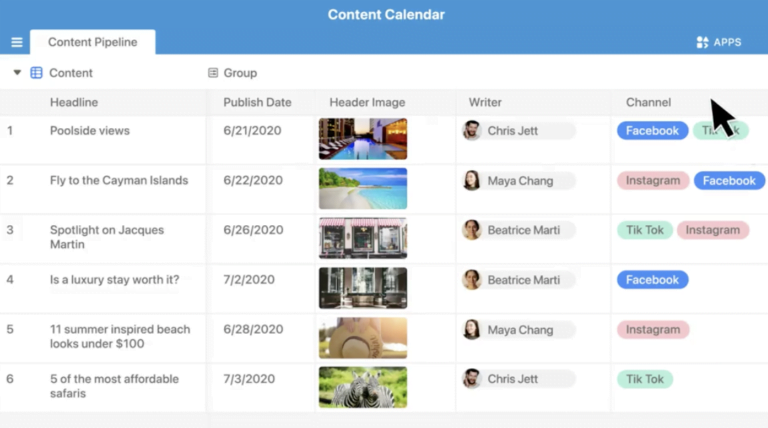
Despite what some may think, brand awareness and brand equity aren’t the same. While brand awareness is how aware customers are of a brand, brand equity refers to customers’ perceived worth of the brand.
We often see the terms “brand awareness” and “brand equity” used interchangeably in the branding space, as if they’re one and the same. But they actually refer to rather different things and knowing the difference has the power to improve your bottom line and bring your business to a whole new level.
This article will walk you through the basics of brand awareness and brand equity, defining exactly what each one is, why they are important, and how you can build them to grow your brand.
Brand Awareness
Table of Contents
Brand awareness appears as a goal so often in digital marketing campaigns that it is a hot buzzword in the space. Sadly, not all marketers understand exactly what it is, why it’s important, how to build and measure it.
What is brand awareness?
Brand awareness plays a main role in customers’ decision making. It refers to whether customers can recall or recognize your brand, or simply whether or not they know about you.
Imagine being at a bar with some friends and they ask you what you would like to drink. What comes to your mind first? Coca Cola or Pepsi? Budweiser or Coors Light?
What a certain brand immediately pops into your head, that’s brand awareness. Or at least it is unaided brand awareness, as you haven’t been prompted. There is also aided brand awareness where you recognize brand names and logos from a list.
According to Kevin Lane Keller, Professor of Marketing at the Tuck School of Business at Dartmouth College and the author of the best-selling textbook Strategic Brand Management, brand awareness includes two elements:
- Brand recall indicates customers’ ability to retrieve the brand from memory when given a product category, purchase order, or usage as a cue. For example, customers’ recall of KFC will depend on their ability to retrieve the brand when they think of fried chickens or of what they should eat for lunch.
- Brand recognition indicates customers’ ability to confirm prior exposure to a brand when given the brand as a cue. In other words, when they go to a store, can they recognize the brand as one to which they’ve already been exposed?
Benefits of brand awareness
Brand awareness brings many benefits to your business:
- Brand awareness creates associations: Brand awareness helps register your brand in customers’ minds. It associates actions and products with a brand, subconsciously encouraging customers to replace common words with branded terms. (Think: if someone has a pressing question, you tell them to Google it, right?)
- Brand awareness puts a brand into the consideration set: Before buying something, customers often consider some options. Netflix or Amazon Prime? Coca Cola or Pepsi? Improving brand awareness can help a brand receive serious consideration for purchase.
- Brand awareness affects choices: The more familiar customers are with a brand, the higher chance they choose it to purchase, and the more they trust it.
How to build brand awareness
Brand awareness doesn’t happen from a simple advertisement or marketing campaign. But increased exposure also doesn’t necessarily equate to increased brand awareness. There’s no quick fix or the best practices for becoming a household name.
That said, there are some effective brand awareness strategies you can try.
- Referral programs: For example, offer 10% off on the next order if a customer invites their friend to shop with your brand. The friend also gets 10% off on their first purchase. Creating a trustworthy referral program can be extremely rewarding when you set your tone on the right audience.
- Guest blogging: Create memorable, valuable content, and share it on other blogs. Remember to find the blogs that have the same target audience as yours and to focus on sharing valuable insights that relate to that audience. Here’s a great example of a type of perfect blog post and to keep most of these guidelines throughout your blogging.
- Local partnerships: Partner with local organizations to hold seminars, festivals, or donation programs. This strategy proves effective for local small businesses by implementing better online business advice.
- Social media contests: For example, ask followers to submit a Christmas photo or video, with other users voting for their favorites. Participants will share the link with their friends and family to get more votes, which helps increase awareness about your brand.
A worthy note is that strong brand awareness results from consistent efforts that extend beyond trying to get paying customers.
How to measure brand awareness
To know if your brand awareness efforts are working, you need to measure it. Here are a few metrics you should keep in mind:
- Search volume: How many people intentionally search for your brand on search engines like Google. This tells whether people out there know your brand’s existence.
- Total site traffic: How many visitors come to your website from all kinds of places like search engines, forums, social media, etc.
- Social engagement: Followers, likes, shares, comments, retweets, etc., on all your social media accounts.
- Brand tracking software: how aware your target audience is of your brand using data collected from surveys.
Overview of brand equity
Brand equity refers to a brand’s perceived value according to its customers. It’s a combination of customer perception, experience, and opinion about your brand.
Because of that, brand equity can be positive or negative. If customers think positively about a brand based on their previous experience with it, it’s positive brand equity. But if they have bad impressions or experience unpleasant customer services, they’re less likely to buy from the brand again and tell their friends to do so. This is an example of negative brand equity.
Benefits of brand equity
Brand equity is important because it allows you to:
- Gain greater market share: Brand equity gives you a strong competitive advantage, making you stand out from competitors and appeal to customers. Thanks to this, you get a higher chance of successfully selling your products.
- Set premium prices: When you have better brand equity, you can charge more for your products and increase your price percentage over the market average. Customers still stick with you because of your unique selling point and your distinct value propositions, which will impact positively on conversion rate optimization.
- Extend your products or services easily: Brand equity helps you gain customers’ trust and loyalty. Hence, they’ll be more likely to try your latest products and share them with others.
- Grow your business: Brand equity has a direct impact on your company’s growth and reputation. With your increased revenue and market dominance, you may find yourself in a powerful situation. That helps you easily form new partner programs, get better supplier rates, and more.
How to build brand equity
Follow this instruction to start establishing your brand equity:
- Develop a strong brand story and brand personality: A brand story aligns itself to trigger customers’ emotional responses. Brand personality means your brand’s style or unique voice for the product or service you’re selling. You should first build these elements to ensure your customers see you the way you want to be seen.
- Build brand awareness: Once you have a strong brand story and brand personality, follow the tactics above to gain awareness around your brand and your offer.
- Communicate with customers: To do this, you can enlist a team of customer service representatives, conduct surveys, etc. The goal is to build trust and acquire returning customers.
- Build a strong bond with customers: For example, sending out weekly newsletters, implementing Facebook Live Q&A sessions, Instagram Stories, personalizing a live chat system to build a better relationship with your customers, or hosting an event.
How to measure brand equity
Like brand awareness, you need to measure brand equity as well. Here are some ways to do it:
- Measure brand awareness: Take note of how you’re handling brand awareness by applying the tactics above.
- Survey customers or ask for their reviews: This way, you can understand how much they know about your brand and how they feel after purchasing your products.
- Analyze your financial situation: Pay attention to metrics like market share, transactional value, growth rate, and sustainability.
Final thoughts
Brand awareness is the foundation of brand equity. As Keller emphasized in an article published in Harvard Business Review, “A firm foundation for brand equity requires that consumers have the proper depth and breadth of awareness and strong, favorable, and unique associations with the brand in their memory.” This definition means that sometimes brand awareness and brand equity are used interchangeably. However, as this article has shown, they are not the same. Both need to be worked on separately but will come together to form a strong brand.
Remember, once a person is strongly aware of your brand, they start on a path to recognize you without assistance, buy from you, and prefer you over other similar brands. They’re probably loyal to you and recommend you to their family and friends. That’s the way you’ll create brand equity.
Photo by Pineapple Supply Co. on Unsplash





